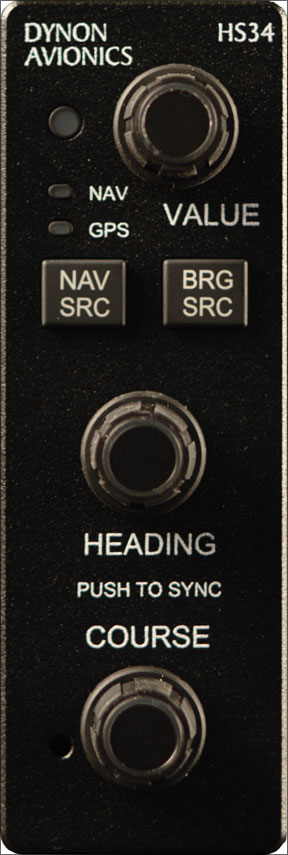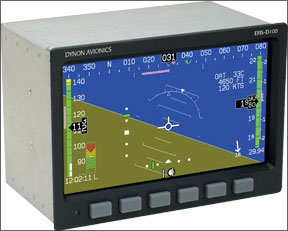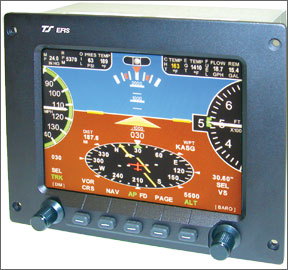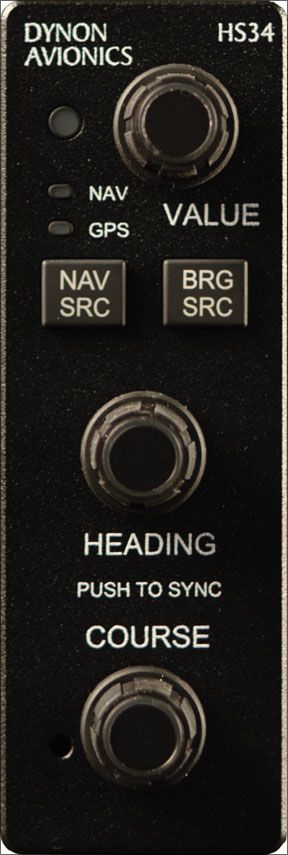One of the benefits of a light sport aircraft is that you can install non-certified equipment. All you need is the part, a willing shop and a letter from the aircraft manufacturer authorizing the installation.
With this freedom there comes the risk that you’ll add some whiz-bang item thats about as reliable as that 73 Fiat Spider you once fell for. Luckily, there are several reliable vendors when it comes to flight instruments. Even Garmin is stepping in with announced plans for the G3X, a derivative of the G300 display they developed for the Cessna Skycatcher.

135
Rather than look at all systems, we took the runaway leader in LSA EFIS, the Dynon D-100/D-120 combination, and did a fly-off against one of the most radically different EFIS systems out there, the TruTrak EFIS. We flew nearly identical Remos GX airplanes with both systems thanks to Tommy Lee of Adventure Flight, in Springdale, Arkansas, and Frank Maslakow of Sierra Foxtrot Aviation in Fort Smith, Arkansas. Unfortunately, there was no clear winner.
Dynon Defines LSA Glass
Dynon broke new ground on homebuilt/experimental scene in 2004 with a truly affordable, big-screen EFIS. There have been several software improvements since then, which Dynon offers free to its customers. Dynons pricing and reputation has made them the default choice for an EFIS display in LSAs.
We put the D-100 through its paces on a turbulent day and found it easily up to the task. The response rate is quick and graphics scroll cleanly, although less smoothly than a G1000 system that costs 30 times as much. Much of the performance in low-cost EFIS comes from how the system adjusts the data coming from the rate sensors, or digital gyros as they are sometimes called. Dynon relies heavily on airspeed for this, but we couldnt get the system to misbehave in slips, aggressive maneuvers, low-airspeed gyration or momentary control deflections-except for sudden rudder deflection where it overcompensated.
If the D-100 were to lose good airspeed data, such as a blocked pitot or static source, the attitude data could be misleading. Given that most LSAs are VFR-only, we see this as a non-issue. We did notice slight, erroneous pitch indications during gusts on approach, but they were so small we would have mistaken them for normal turbulence had we not been actively looking for them.
Some aspects of the D-100 user interface excel. It has smart visual stacking of elements on the HSI and heading strip, with GPS ground track, course and heading bugs all viewable at all times. You can get perfect, on-course guidance in any wind by knowing what to line up where. The displays are highly customizable through on-screen menus, although you’ll want to read the manual to make sure you do it right. An optional angle of attack indicator is in easy view and the system has clear warnings for things like low or high airspeed, departing the bugged altitude and more.

The visual display looks a bit clunky, in our opinion. Small numbers and thin lines are harder to read than the TruTrak or some other systems weve looked at. The attitude display has something that looks like a flight path marker, but really isn’t. If you choose to display all the data, it gets quite busy. Mike Schofield of Dynon told us the system is about maxed out on what it can display. Dynon has plans for an entirely new system with moving maps and synthetic visions on new hardware they plan to release next year.
The user interface can be a bit odd, too. The D-100 is controlled through several levels of menus driven by buttons below the display. This is fine for setting up datablocks to your liking, but just too awkward for setting bugs or courses. Wed recommend the $650 HS34 add-on for this as it makes controlling the D-100 much easier. Its also a good example of how you must read the Dynon documentation (which is excellent, by the way). The HS34 does far more than youd guess just playing around with it. Further pluses of the D-100 is a built-in, battery backup and the ability to show tuned frequencies from several Garmin navigators.
The D-100 cost is hard to beat, whether youre ordering it with your new LSA or upgrading what youve got. The D-100 is $2400 and the accompanying D-120

engine monitor is $2000 (probes not included). The D-120 can also display attitude data from a co-installed D-100. For space-challenged cockpits, the Dynon D-180 combines these units in one.
Dynon has just introduced an autopilot integrated into the D-100. Existing D-100 units can be upgraded for free, so you just pay the cost and installation of servos. This could be a great way to add an autopilot to an existing Dynon set-up. Wed strongly recommend the AP74 controller to go with it (in place of the HS34). The AP74 adds an interesting “Hold 180” feature that holds altitude while making a left, 180-degree turn. This could be just the ticket for inadvertent VFR-into-IMC, especially if followed by a wings-level, autopilot-controlled descent.
Dynon has an excellent website and weve heard multiple accolades for their customer support.
TruTrak Breaks Tradition
Jim Youngkin, the founder of TruTrak, practically invented the three-inch cockpit instrument and his work has impacted nearly every autopilot currently flying in GA. Hes notorious as a paradigm breaker and his cockpit EFIS keeps with this tradition.
This first thing you notice about the TruTrak EFIS is that it displays beautiful, anti-aliased graphics. These scroll smoothly in flight on par with certified units, such as the Garmin G1000. The numbers and letters are large, we’ll placed and easy to read. For example, the waypoint and distance information are just above and to the sides of the HSI. Sunlight readablity is as good as any EFIS weve seen, certified or not.
The next thing you notice is that the display isn’t showing as much data as youd expect. Heres where it gets interesting: The EFIS isn’t displaying what youd expect at all. TruTraks EFIS doesnt show attitude or heading in the standard setup. It shows vertical speed and ground track. Youngkins justification for this is that you really don’t care about aircraft attitude or heading in most situations. You care about whether youre climbing or descending, and if youre staying on course given the wind. TruTrak makes it easy. Pitch to keep the “horizon” level and bank to keep the “heading” correct for your destination and you’ll fly to near-autopilot standards.
We tried it for nearly 1000 miles of flying and, well, it works great. The only time we got confused was approaching an airport at night with a strong crosswind. The landing runway wasnt quite oriented as we expected because of our old habit of thinking heading, not track. The system has built-in warnings at low airspeed to prevent stalling, so you need not worry about flying into a nose-high stall without realizing it.
Performance of the system is smooth and accurate in all flight regimes. TruTrak also uses airspeed as its primary augmentation to the rate sensors. TruTrak is arguably too responsive to small, abrupt inputs, but the visual motions are minor. We can attest that it handles turbulence well. Like the Dynon, TruTrak has an optional engine monitor screen, with graphics as clean as the EFIS.
This system can be run with minimal training. We only found two features that required real explanation to use correctly. In fact, the downloadable manual is only two pages long-including the cover page. (The Dynon D-100 manual is 86 pages long.)
Other great features of the TruTrak system are flap and trim position indicators that appear on screen when you need them, easy reconfiguration of the display, engine and flight time information on the primary display, the option for backup flight instruments on the engine monitor that have their own data source for redundancy and a nice fuel monitoring/reminder function.
TruTrak also has a function that will give you guidance to an approximate final approach for any airport and any runway. (It actually lines you up with the airport center on the correct heading for the runway, which is why its approximate.) It takes some practice to use, but once you understand it, its pretty slick. Having a moving map makes the feature somewhat superfluous, however.
There are some annoyances with the system. The altitude bug sets at 500-foot increments only, which makes setting pattern altitude impossible at many airports. Displaying track requires an attached GPS to be working. Lose the GPS signal and you get an old-fashion DG that must be periodically synced with the whiskey compass. Wed also like to see a display of winds aloft on the primary display.
The TruTrak autopilot is integrated directly into the EFIS and it works beautifully, both in terms of performance and ease of control. TruTraks leadership in LSA autopilots shows. Options for the autopilot include a “Level” button that will roll the wings level and hold altitude, similar to the level button in a Cirrus Perspective. You can even get a yaw damper. The autopilot drives up the EFIS price, however. The basic EFIS is $3800. Add a single-axis autopilot and its $5300. Dual-axis autopilot units range from $6700-$8900 depending on how sophisticated a system you want.
Some have postulated that switching between a TruTrak EFIS and a traditional EFIS or a six-pack setup would cause problems, since the pilot must now think about heading and pitch. We disagree. TruTrak uses traditional symbology in an intuitive manner. We expect pilots could switch between differently-equipped aircraft (as we did) with little or no trouble. TruTrak also has excellent, responsive customer support.
Whats Easy Worth?
If youre a feature geek, who likes to see every bit of data on the display, Dynon is the hands-down winner. If you like an easy-to-use, easy-on-the-eyes presentation of all the data you need and little more, you’ll love the TruTrak-once you abandon any lingering attachments to pitch and heading, that is.
As much as we enjoyed flying the TruTrak system, however, we find the economics of it challenging. Its almost $3000 more for a TruTrak EFIS and integrated, two-axis autopilot compared to a comparable Dynon setup. For that $3000 you don’t get any more mission capability except, perhaps, the automated airport approach and excellent autopilot performance. Because we havent flown the Dynon autopilot yet, we cant say how much thats worth.
If youre intrigued by the TruTrak system, wed recommend giving it a look as you can get most anything you want in an LSA if you jump through the hoops. But in terms of bang for the buck, its still hard to beat Dynon.





